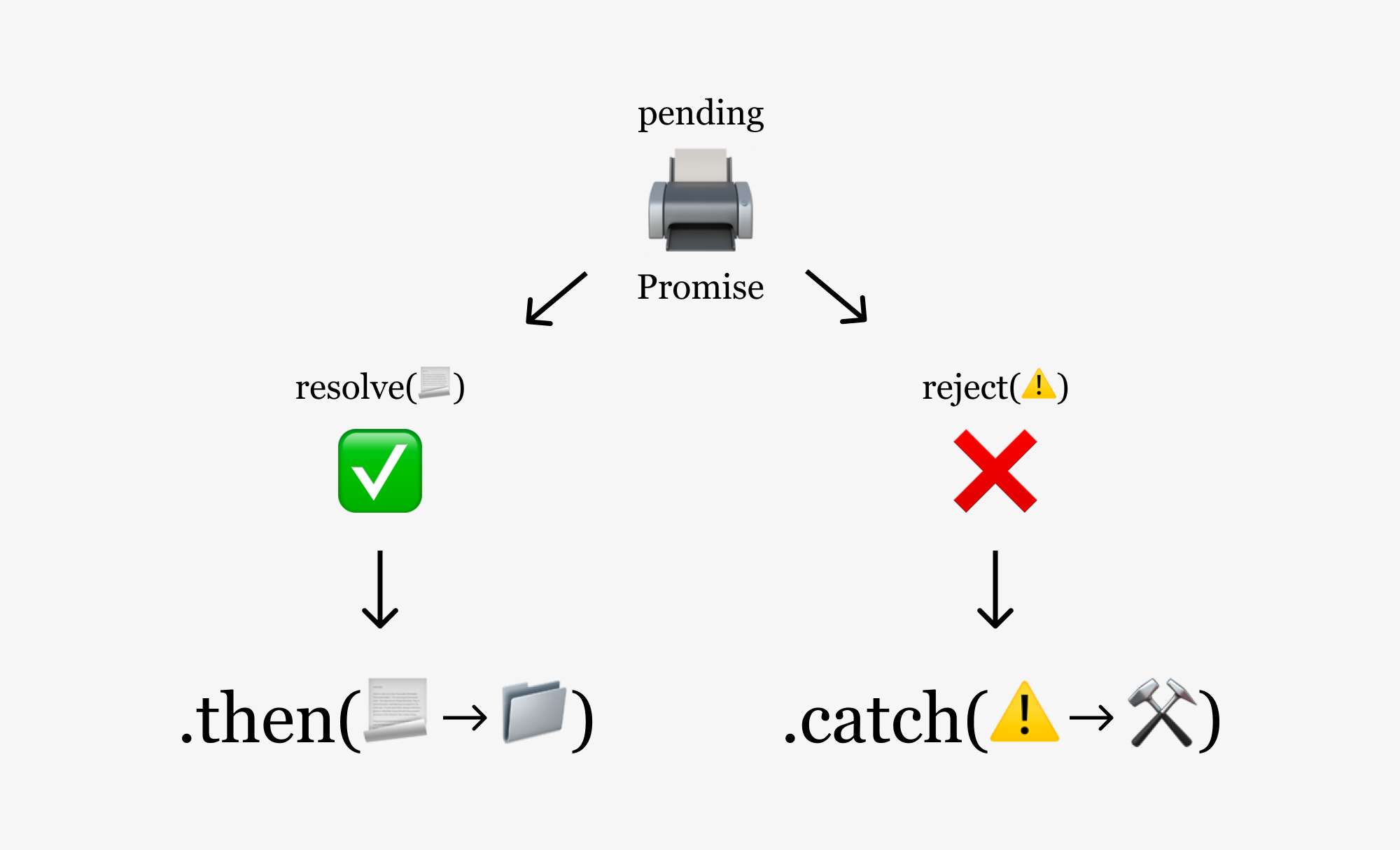What is a Promise | JavaScript

A Promise is an object that represents an eventual outcome (success or failure) of an asynchronous operation and its resulting value. A promise is basically a placeholder for a value (outcome of operation) or an error (reason for failure) that we will receive at some point in the future, but we don't know exactly when.
Possible Statuses
- pending - initial state or in progress
- resolved - an asynchronous operation had completed successfully and resulted in a value
- rejected - an asynchronous operation had failed and resulted in an error object
Promises
- settled promise - a promise in the resolved or rejected state
- chaining promises - asynchronous operations happening one after another, used when each next operation depends on the value from the previous asynchronous operation.
Example: We can only put the clean clothes (resolved value) to the dryer (promise #2) after washer (promise #1) had completed its cleaning cycle - concurrency - multiple operations happening at the same time, used when several asynchronous actions are independent from each other.
Example: We can have dryer (promise #1), microwave (promise #2) and printer (promise #3) work at the same time as long as we have enough power (threads) to run all simultaneously .then()- Promise method that returns a Promise. This method can take up to two callback functions as its arguments - one to handle success (resolved promise) and one to handle failure (rejected promise)..catch()- Promise method that returns a Promise. This method takes in one callback function as its argument and only handles failure (rejected promise)..finally()- Promise method that returns a Promise. This method takes in one callback function as its argument and runs once the Promise is settled (either resolved or rejected).

Creating a Promise in JavaScript
const printerFunction = (resolve, reject) => {
let printed = true; // change to `false` to trigger `reject()`
if (printed) {
resolve('📃'); // 📃 resolved value
} else {
reject('⚠️'); // ⚠️ rejection reason
}
}
const printPromise = new Promise(printerFunction);Consuming a Promise
const handleSuccess = (resolvedValue) => {
console.log(`Yay! Let's put ${resolvedValue} in the folder 📁!`);
}
const handleFailure = (rejectionReason) => {
console.log(`Oh no! There was an error: ${rejectionReason}! Let's fix it ⚒️!`);
}
const makePrintCompleteSound = () => {
console.log('Beep 🎵!')
}
printPromise
.then(handleSuccess)
.catch(handleFailure)
.finally(makePrintCompleteSound);Here is what we see in the Console:
// if `printed` is set to `true`
Yay! Let's put 📃 in the folder 📁!
Beep 🎵!
// if `printed` is set to `false`
Oh no! There was an error: ⚠️! Let's fix it ⚒️!
Beep 🎵!Recommended Resources:
- Promise, Promise.prototype.then(), Promise.prototype.catch(), Promise.prototype.finally() by MDN Web Docs
- JavaScript Promises by W3Schools
- Asynchronous Programming by Marijn Haverbeke, Eloquent JavaScript
